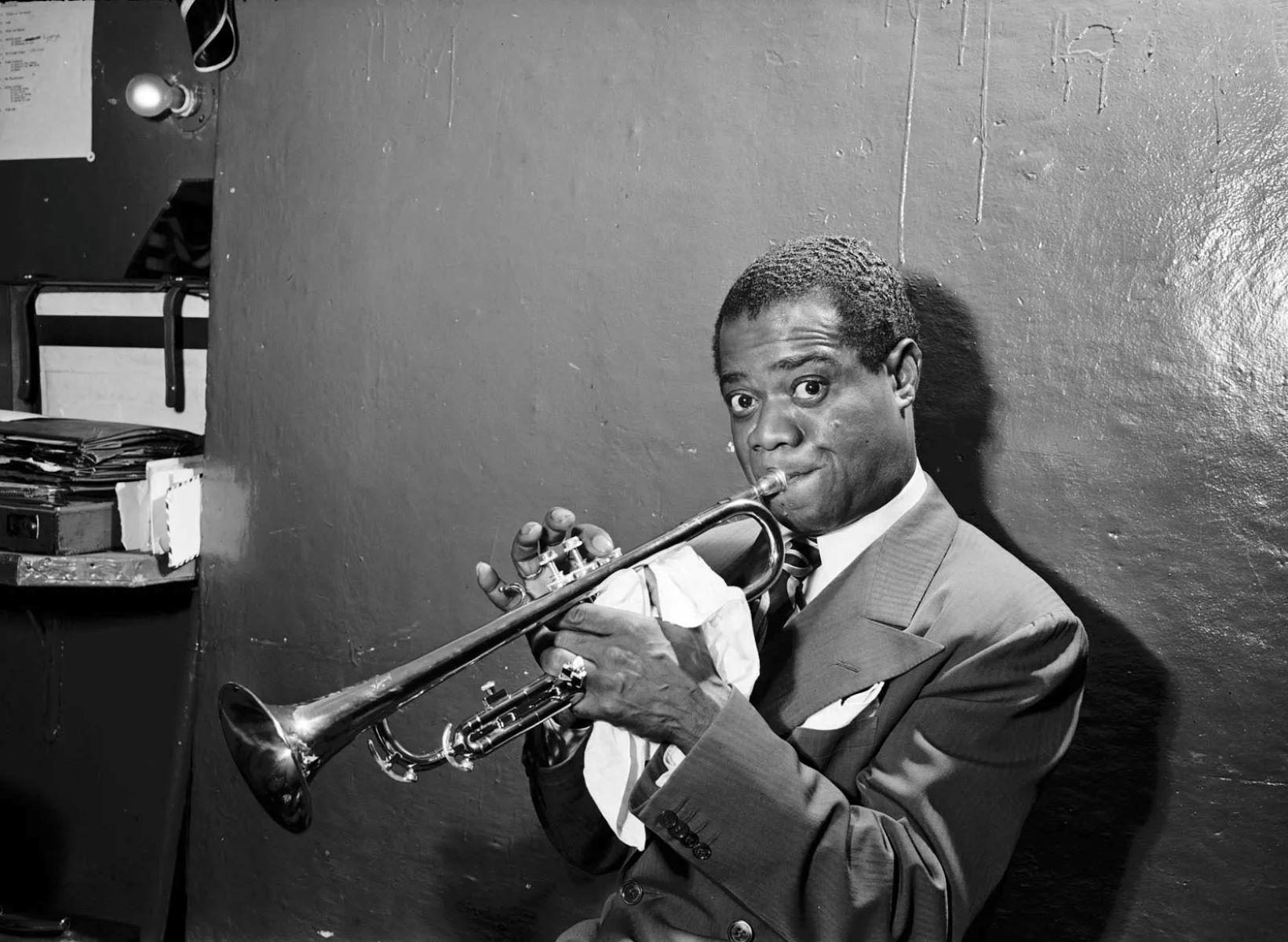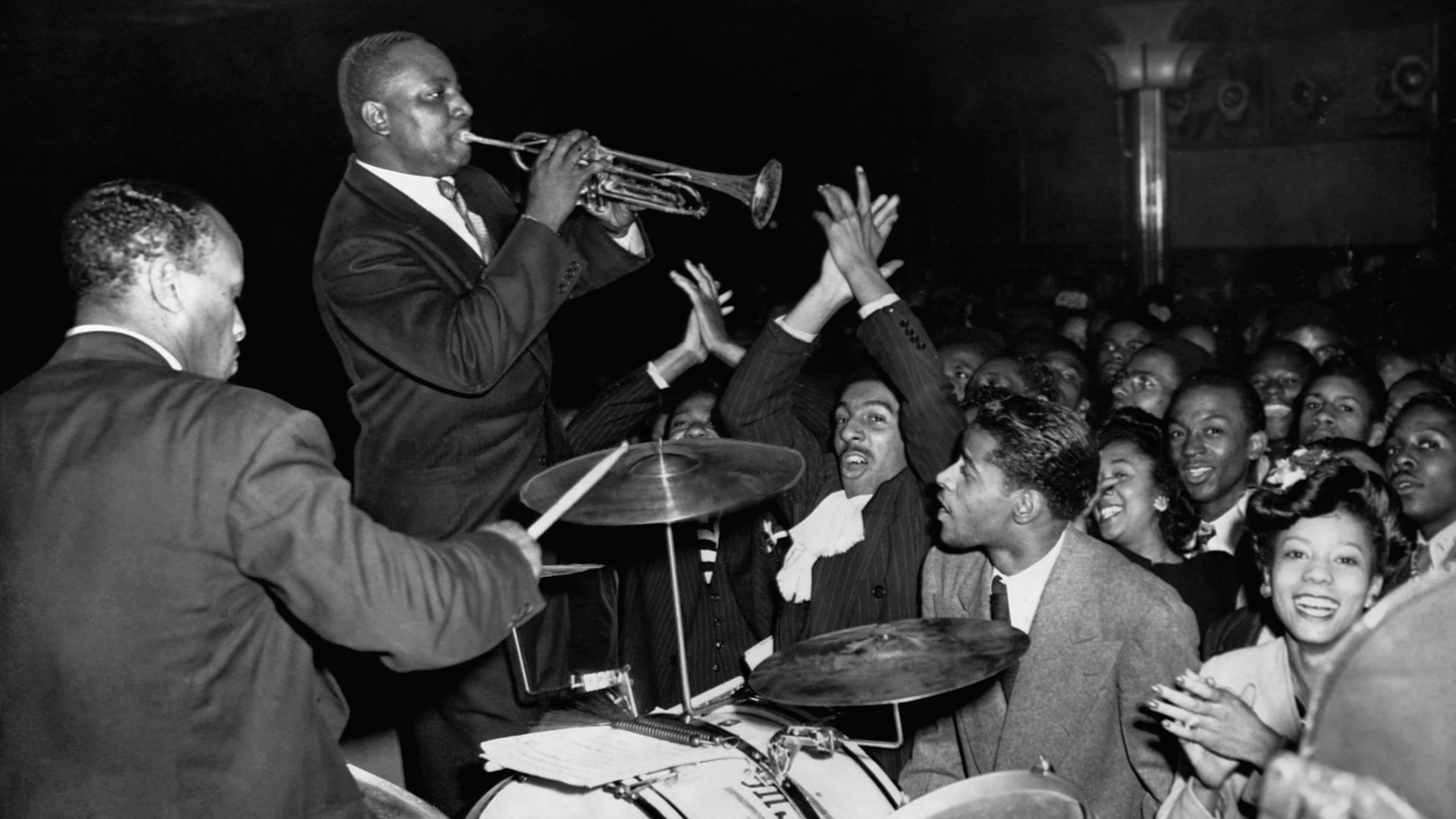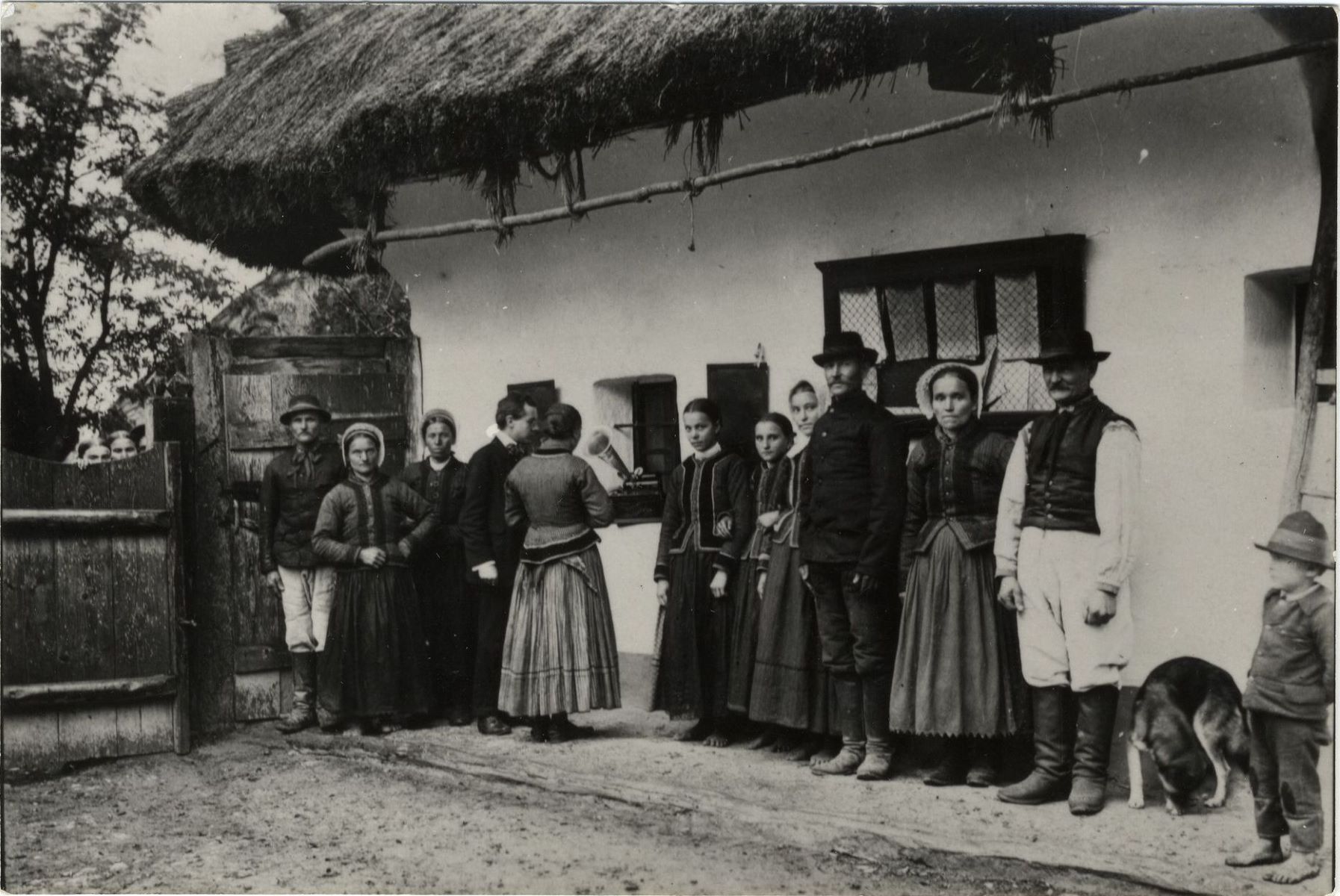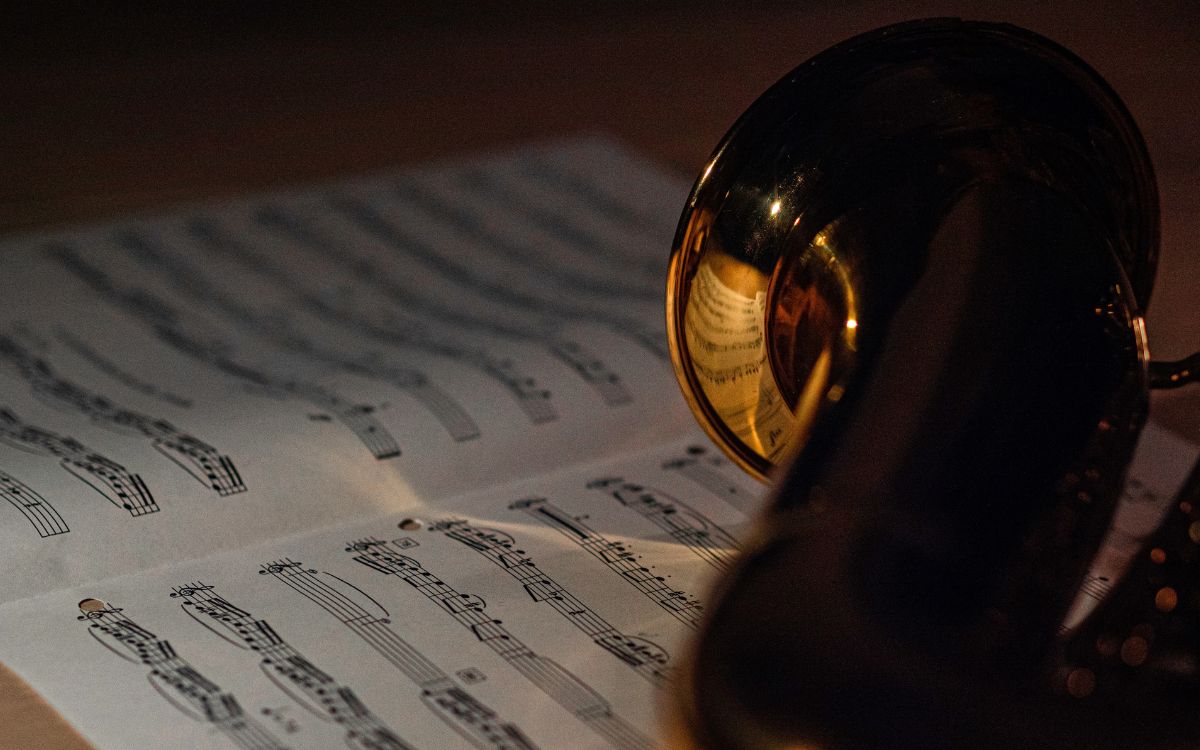Home>Events & Info>Music Therapy>When Did Music Therapy Start


Music Therapy
When Did Music Therapy Start
Published: February 1, 2024
Discover the origins of music therapy and its impact on the mind and body. Uncover the history and evolution of this powerful therapeutic approach.
(Many of the links in this article redirect to a specific reviewed product. Your purchase of these products through affiliate links helps to generate commission for AudioLover.com, at no extra cost. Learn more)
Table of Contents
Introduction
Music has been a fundamental part of human culture for thousands of years. It brings people together, evokes emotions, and has the power to heal. Music therapy harnesses this power to promote health and well-being, both physically and mentally. It is a unique field that combines music and therapy techniques to address a wide range of issues and conditions.
Music therapy is the use of music interventions by trained professionals to address the physiological, emotional, cognitive, and social needs of individuals. It is a holistic approach that recognizes the profound impact that music can have on the human brain and body.
This article explores the ancient beginnings of music therapy, tracing its roots back to ancient civilizations such as Egypt, Greece, China, and Native American cultures. We will also delve into the modern origins of music therapy, highlighting the early pioneers and the founding of professional organizations dedicated to advancing the field.
Throughout history, music has been recognized as a powerful tool for healing and transformation. It has been used to soothe and calm, to uplift and inspire, and to communicate and connect on a deeper level. Music therapy takes this innate connection and applies it in a structured and intentional way to improve quality of life and promote healing.
Whether it’s through playing an instrument, singing, listening to music, or engaging in rhythmic activities, music therapy provides a unique and creative outlet for self-expression and personal growth. It can be used in a variety of settings, including hospitals, rehabilitation centers, schools, and community programs.
Music therapists are trained professionals who have a deep understanding of music theory, psychology, and therapeutic techniques. They work closely with individuals to develop personalized plans that incorporate music interventions to address specific goals and needs.
The benefits of music therapy are vast and can extend to individuals of all ages and abilities. It can help reduce stress and anxiety, improve mood and emotional well-being, enhance cognitive function, and promote physical rehabilitation. Music therapy is also a valuable tool for individuals with special needs, such as those with autism spectrum disorder or dementia.
In the following sections, we will explore the ancient beginnings of music therapy, shedding light on how different cultures throughout history incorporated music into their healing practices. We will then dive into the modern origins of music therapy, highlighting the key figures and organizations that laid the groundwork for this evolving field.
Ancient Beginnings of Music Therapy
Music therapy has a rich history that can be traced back to ancient civilizations. Music has always been seen as more than just entertainment; it has been recognized for its therapeutic properties as well. In this section, we will explore how different cultures in ancient times incorporated music into their healing practices.
Music Therapy in Ancient Egypt: One of the earliest records of music therapy can be found in ancient Egypt. Egyptians believed in the power of music to heal both the body and the soul. They used music in various rituals, ceremonies, and medical treatments. The Ebers Papyrus, a medical document from around 1500 BCE, mentions the use of music to treat mental disorders and induce relaxation.
Music Therapy in Ancient Greece: In ancient Greece, music was highly regarded and played a crucial role in daily life. The Greek philosopher Pythagoras believed in the healing properties of music and developed a theory of music therapy. He believed that certain musical scales and harmonies could restore harmony to the body and treat various ailments.
Aristotle, another Greek philosopher, recognized the effects of music on emotions. He observed that different modes of music could elicit different emotional responses and recommended specific modes for therapeutic purposes. The Greek physician Hippocrates, known as the father of medicine, also acknowledged the healing power of music and used it to treat his patients.
Music Therapy in Ancient China: Music therapy was also prevalent in ancient China. The Chinese saw music as a means to maintain harmony and balance in the body and the universe. They believed that specific musical compositions and rhythms could regulate the flow of Qi (energy) and promote healing. Music was used in traditional Chinese medicine to treat ailments such as insomnia, anxiety, and digestive disorders.
Music Therapy in Native American Cultures: Native American cultures have a long history of using music for healing and spiritual purposes. Music played a central role in rituals and ceremonies to promote physical and emotional well-being. Native American medicine men and women often used drums, rattles, and chanting to induce altered states of consciousness and facilitate healing.
These are just a few examples of how ancient civilizations recognized the healing power of music. These early practices laid the foundation for the modern field of music therapy. The understanding that music can influence and promote physical, emotional, and spiritual well-being has stood the test of time and continues to be a core principle in music therapy today.
Music Therapy in Ancient Egypt
Ancient Egypt is known for its rich history, advanced civilization, and fascinating cultural practices. Music played a significant role in Egyptian society, not only as entertainment but also as a therapeutic tool. The healing properties of music were highly valued, and it was an integral part of various rituals, ceremonies, and medical treatments.
The Egyptians believed in the interconnectedness of the body, mind, and soul. They saw music as a powerful medium to restore harmony and balance within an individual, promoting overall well-being. Different musical instruments and melodies were used for specific purposes, targeting various physical and mental conditions.
The Ebers Papyrus, one of the oldest surviving medical documents from ancient Egypt (around 1500 BCE), provides valuable insight into the use of music therapy during that time. This document made reference to specific musical treatments for mental disorders, including anxiety and depression. The papyrus also documented the use of music to induce relaxation and promote healing.
In ancient Egypt, music therapy was implemented by skilled musicians who were trained in the therapeutic use of music. These musicians, known as “sekhemti,” played a variety of instruments, such as the harp, lyre, flute, and percussion instruments like drums and rattles.
One of the most well-known examples of music therapy in ancient Egypt is the “house of life,” where priests and healers would use music to facilitate healing rituals. These rituals often involved chanting, drumming, and playing of instruments to create a healing atmosphere. The vibrations and rhythms of the music were believed to have a profound effect on the body, mind, and spirit.
Another notable example of music therapy in ancient Egypt was the use of the Sistrum, a musical instrument with rattling metal discs. The Sistrum was associated with the goddess Hathor, known for her healing abilities. It was believed that the sound and vibrations produced by the Sistrum could drive away evil spirits and bring about healing.
Music was also used during childbirth in ancient Egypt. Midwives would sing and play instruments to alleviate pain and create a soothing atmosphere for the mother-to-be. It was believed that the music would help ease the process of childbirth and ensure a healthy delivery.
The role of music in ancient Egypt extended beyond therapeutic purposes. It was also used in religious ceremonies, festivals, and celebrations. Music was seen as a means to connect with the divine and invoke a sense of spirituality.
Overall, music therapy in ancient Egypt demonstrated a profound understanding of the potential healing benefits of music. The Egyptians recognized the power of sound and vibration to affect the body and mind, and they incorporated music into various aspects of their culture and daily life. Their practices laid the groundwork for the development of music therapy as a formal discipline, which continues to evolve and thrive in the modern world.
Music Therapy in Ancient Greece
Ancient Greece, known for its cultural and intellectual achievements, also recognized the therapeutic power of music. Music played a crucial role in daily life, and its healing properties were acknowledged by influential figures such as Pythagoras, Aristotle, and Hippocrates.
Pythagoras, a Greek philosopher and mathematician, believed that music could restore harmony and balance within the body. He developed a theory of music therapy based on mathematical principles, proposing that specific musical scales and harmonies could have a profound impact on an individual’s physical and emotional well-being.
Aristotle, another prominent Greek philosopher, observed the effects of music on emotions. He recognized that different musical modes could elicit specific emotional responses in listeners. Aristotle recommended the use of music to promote and restore emotional balance, providing a therapeutic outlet for individuals experiencing emotional distress.
Hippocrates, often referred to as the father of medicine, also acknowledged the healing power of music. He incorporated music into his medical treatments and saw it as a way to improve the overall well-being of his patients. Hippocrates believed that different musical modes and rhythms could evoke specific physiological responses, and he used music to induce relaxation, relieve anxiety, and stimulate the healing process.
In ancient Greece, music was an essential element of both the spiritual and physical realms. It was used in religious ceremonies, rituals, and festivals to connect with the gods and invoke a sense of spirituality. Music was also employed for therapeutic purposes, serving as a means to restore harmony within the body and mind.
Music therapy in ancient Greece was not limited to passive listening. Active participation in music-making was highly encouraged. Playing musical instruments, singing, and engaging in rhythmic activities were seen as powerful ways to stimulate the senses and promote healing.
The Greek physician Asclepius, considered the god of healing, recognized the therapeutic potential of music in his healing temples. These temples, known as Asclepieia, utilized music in conjunction with other healing practices to create an immersive and transformative healing experience for individuals seeking relief from physical and mental ailments.
The ancient Greeks also believed in the power of music to influence behavior and character. They used music education as a means of cultivating moral virtues and personal development. Music was believed to have the potential to elevate the soul, shape moral character, and contribute to a well-rounded individual.
Overall, music therapy in ancient Greece reflects a deep understanding of the significant role music plays in promoting holistic well-being. The Greeks recognized the power of music to impact emotions, physical health, and spiritual connection. Their insights and practices laid the foundation for the development of music therapy as a legitimate therapeutic discipline, extending its influence into the modern world.
Music Therapy in Ancient China
Ancient China has a rich history of utilizing music for healing and promoting well-being. The Chinese recognized the power of music to restore balance, harmonize energy, and treat various physical and mental conditions.
In traditional Chinese medicine, music was viewed as an essential component of healing practices. It was believed that specific musical compositions, tones, and rhythms had the ability to regulate the flow of Qi (energy) within the body, thus promoting health and healing. Music was seen as a means to maintain harmony, balance, and alignment within the body and the universe.
The Chinese relied on the concept of the Five Elements (Wood, Fire, Earth, Metal, and Water) to understand and diagnose imbalances in the body. Each element was associated with specific musical scales and tones. By using music corresponding to the affected element, the Chinese believed they could restore balance and alleviate various ailments.
Musical instruments such as the guqin, a stringed instrument, and the pipa, a plucked instrument, were commonly used in ancient China for therapeutic purposes. The melodies and vibrations produced by these instruments were thought to have a profound effect on the body, mind, and spirit.
Music was also integrated into traditional Chinese medical treatments. Physicians prescribed specific melodies and rhythms to accompany acupuncture, massage, and herbal therapies. The combination of these healing modalities with music was believed to enhance the therapeutic effects and facilitate the body’s natural healing process.
The Chinese also employed music for psychological and emotional well-being. Certain melodies were known for their ability to calm the mind, reduce anxiety, and promote relaxation. Music was used as a tool to manage stress, improve mood, and support mental health.
Furthermore, music played a significant role in traditional Chinese rituals and ceremonies. The rhythmic drumming, chanting, and singing during these occasions were believed to connect with the spiritual realm and invoke blessings and positive energy.
Throughout history, music therapy in ancient China evolved alongside other traditional healing practices. It was deeply rooted in the belief that the human body is a microcosm of the larger universe, with music acting as a powerful tool to restore harmony and balance within this microcosmic system.
Today, the principles and practices of music therapy in ancient China continue to influence the field. Elements of traditional Chinese music therapy can be found in contemporary approaches, blending with modern scientific research and therapeutic techniques to create a holistic and culturally diverse approach to healing through music.
Music Therapy in Native American Cultures
Native American cultures have a longstanding tradition of using music for healing and spiritual purposes. Music played a central role in rituals, ceremonies, and daily life, serving as a powerful tool to promote physical and emotional well-being.
Native American music therapy is deeply rooted in the belief that sound and music have the ability to connect with the spiritual realm. Traditional healing practices often incorporated music as a means to facilitate communication with the divine and evoke healing energies.
The use of drums, rattles, flutes, and chanting were common in Native American music therapy. The repetitive rhythms and melodies created a meditative and trance-like state, enabling individuals to connect with their inner selves or higher powers. This altered state of consciousness was believed to promote healing and self-discovery.
For Native American tribes, music was also used to address physical ailments. The vibrations produced by the drums and other instruments were thought to stimulate the body’s natural healing processes. Certain rhythms and melodies were believed to have specific healing properties, targeting different areas of the body.
Music therapy was integral to the Native American medicine men and women, who possessed deep knowledge of songs, chants, and rituals passed down through generations. They used music to facilitate healing ceremonies and rituals, guiding individuals towards physical, emotional, and spiritual wellness.
In addition to individual healing, music played a communal role in Native American cultures. Through group singing, dancing, and drumming, community members would come together to collectively celebrate, offer gratitude, and promote harmony within the community. This sense of unity and connectedness contributed to overall well-being and social support.
Contemporary Native American music therapy practices continue to honor and incorporate the ancient traditions. Native American music therapists draw on their cultural heritage to create therapeutic interventions that address the unique needs of their community members. Music is utilized as a means of expression, self-discovery, and connection, fostering healing and growth.
It is important to acknowledge the diversity among Native American tribes and cultures, as each has its own distinct musical traditions and healing practices. The use of music in Native American music therapy varies among tribes, reflecting the unique beliefs, customs, and histories of each community.
The rich tradition of Native American music therapy serves as a reminder of the profound connection between music, spirituality, and healing. The music therapists who integrate these practices into their work carry on the legacy of their ancestors, promoting wellness and cultural preservation through the transformative power of music.
Modern Origins of Music Therapy
The modern origins of music therapy can be traced back to the 20th century when the field began to gain recognition as a distinct therapeutic discipline. It was during this time that individuals started to explore the therapeutic potential of music in a systematic and evidence-based manner.
The development of music therapy as a formal profession can be attributed to pioneers such as E. Thayer Gaston, who is considered the father of music therapy in the United States. In the 1940s, Gaston established the first academic program in music therapy at Michigan State University. His groundbreaking work laid the groundwork for the professionalization and standardization of music therapy practices.
Another influential figure in the early evolution of music therapy was Willem van de Wall, who introduced music therapy in the United States after observing its beneficial effects during his time in a psychiatric hospital in the Netherlands. Van de Wall opened the first music therapy program in the United States at the State Psychopathic Hospital in Iowa in 1944. His efforts helped to demonstrate the value of music therapy in psychiatric settings.
During the mid-20th century, music therapy gained recognition as a legitimate therapeutic intervention in various healthcare and educational settings. The field expanded and diversified, with music therapists applying their skills in hospitals, rehabilitation centers, schools, and community programs.
In 1950, the National Association for Music Therapy (NAMT) was founded in the United States, marking a significant milestone in the professionalization of the field. The NAMT provided a platform for music therapists to come together, share research and best practices, and advocate for the recognition and advancement of music therapy as a distinct discipline.
In 1971, the American Association for Music Therapy (AAMT) was formed through the merger of the NAMT and the American Association of Music Therapy. With this consolidation, the field of music therapy in the United States gained a unified voice and a stronger presence.
Today, music therapy is recognized as an evidence-based profession that incorporates music and therapeutic techniques to address a wide range of needs and conditions. Music therapists undergo rigorous training, often obtaining a bachelor’s or master’s degree, and complete clinical internships to develop their skills and expertise.
Modern music therapy utilizes a variety of techniques and interventions tailored to meet the specific goals and needs of individuals. It encompasses activities such as playing instruments, singing, songwriting, improvisation, music listening, and movement to achieve therapeutic outcomes.
The benefits of music therapy are widely recognized and supported by research. It has been shown to reduce stress, alleviate pain, improve communication and social skills, enhance physical and cognitive rehabilitation, and promote emotional well-being.
The modern origins of music therapy are a testament to the transformative power of music in promoting health and well-being. As the field continues to evolve, music therapists strive to expand its reach and impact, integrating new research and techniques to positively affect the lives of individuals across diverse populations and settings.
Early Pioneers in Music Therapy
Music therapy as a formal discipline has been shaped by the contributions of many early pioneers who recognized the therapeutic potential of music. These individuals conducted groundbreaking work, laying the foundation for the development and advancement of music therapy as a recognized profession.
E. Thayer Gaston is considered one of the founders of modern music therapy. In the 1940s, he established the first academic program in music therapy at Michigan State University. Gaston emphasized the importance of scientific research and evidence-based practice in the field, helping to establish music therapy as a legitimate therapeutic discipline.
Another significant pioneer in music therapy is Willem van de Wall. Descended from a family of musicians, Van de Wall witnessed the healing effects of music during his work at a psychiatric hospital in the Netherlands. He introduced music therapy to the United States in the 1940s and opened the first music therapy program at the State Psychopathic Hospital in Iowa. Van de Wall’s dedication to the field helped to shape its early development in the United States.
Another key figure in the early history of music therapy is Juliette Alvin. She was a British pianist and music therapist who began practicing music therapy during World War II. Alvin brought music therapy to prominence in the United Kingdom and founded the British Society for Music Therapy (BSMT), which later became the British Association for Music Therapy (BAMT). Her efforts contributed to the recognition and professionalization of music therapy in the UK.
Helen Bonny, a trained classical musician, made significant contributions to the field of music therapy through her innovative work in Guided Imagery and Music (GIM). Bonny developed a structured method of using music and imagery to access and explore unconscious emotions and memories. Her groundbreaking work paved the way for the integration of music and psychotherapy, expanding the scope of music therapy practice.
Barbara Crowe, an influential figure in the field, played a crucial role in advancing music therapy education and practice. She founded the first master’s degree program in music therapy at the University of Kansas in 1974 and served as the president of both the American Music Therapy Association (AMTA) and the World Federation of Music Therapy (WFMT). Crowe’s dedication to advancing the field and promoting research has had a lasting impact on the profession.
These early pioneers, along with numerous others, worked tirelessly to establish music therapy as a recognized and respected profession. Their dedication to research, education, and clinical practice laid the groundwork for the growth and development of the field, shaping the principles and standards that music therapists adhere to today.
The contributions of these pioneers continue to inspire and influence music therapists around the world. Their commitment to exploring the therapeutic potential of music has improved the lives of countless individuals and has contributed to the ongoing advancement and expansion of the field of music therapy.
Founding of Professional Organizations
The establishment of professional organizations has played a crucial role in the development and advancement of music therapy as a recognized and respected profession. These organizations have provided a platform for music therapists to come together, share knowledge and research, and advocate for the recognition and growth of music therapy as a distinct discipline.
The National Association for Music Therapy (NAMT) was one of the first professional music therapy organizations established in the United States. Founded in 1950, it aimed to promote the development of music therapy as a profession through education, research, and advocacy. NAMT played a key role in consolidating the profession and fostering collaboration among music therapists.
In 1971, the NAMT merged with the American Association of Music Therapy (AAMT) to form the American Music Therapy Association (AMTA). This merger created a unified professional organization dedicated to advancing the field and providing support to music therapists across the United States. The AMTA continues to be a leading force in promoting research, education, and clinical practice in music therapy.
Internationally, the World Federation of Music Therapy (WFMT) was founded in 1985. The WFMT brings together music therapy associations from around the world to encourage communication and collaboration among music therapists globally. It provides a platform for sharing research, hosting conferences, and establishing international standards and guidelines for the profession.
Other national and regional music therapy organizations have also been established worldwide. For example, the British Association for Music Therapy (BAMT) was founded in the United Kingdom in 1964, serving as a professional body for music therapists and promoting the growth and recognition of music therapy in the British healthcare system. Similar organizations exist in countries such as Canada, Australia, Germany, and many more.
These professional organizations have been instrumental in defining the standards of practice, facilitating professional development, and advocating for the advancement and recognition of music therapy as an evidence-based profession. They provide resources, research publications, and training opportunities for music therapists, ensuring that practitioners stay informed and up to date with the latest developments in the field.
Furthermore, professional organizations play a critical role in establishing ethical guidelines and promoting professional competence among music therapists. They uphold standards of ethical practice and provide avenues for credentialing and certification, ensuring that clients receive high-quality care from qualified practitioners.
These organizations also advocate for the integration of music therapy into healthcare and education systems. They work closely with policymakers, healthcare professionals, and educational institutions to raise awareness about the benefits of music therapy and to advocate for its inclusion in mainstream healthcare and educational settings.
The founding of professional organizations has provided music therapists with a sense of community, support, and resources. These organizations have fostered collaboration, research, education, and advocacy, elevating the status of music therapy as a reputable and effective healthcare profession.
Conclusion
Music therapy is a vibrant and evolving field that harnesses the therapeutic power of music to promote health and well-being. From ancient civilizations to modern-day practices, the use of music for healing can be traced throughout history. Ancient cultures recognized the profound impact of music on the body, mind, and spirit, incorporating it into their rituals and traditions.
In the modern era, early pioneers such as E. Thayer Gaston, Willem van de Wall, Juliette Alvin, Helen Bonny, and Barbara Crowe paved the way for the professionalization and advancement of music therapy. These individuals conducted groundbreaking work, establishing academic programs, conducting research, and shaping the principles of the field.
The founding of professional organizations, such as the AMTA, WFMT, BAMT, and others, has played a crucial role in bringing music therapists together, providing a platform for knowledge-sharing, advocacy, and collaboration. These organizations have advanced research, education, and clinical practice, ensuring the continued growth and recognition of music therapy as a distinct discipline.
Music therapy has demonstrated its effectiveness in a wide range of settings, including hospitals, rehabilitation centers, schools, and community programs. It utilizes various music interventions tailored to meet the specific needs and goals of individuals, helping to reduce stress, improve cognition, enhance emotional well-being, and facilitate physical rehabilitation.
While the field continues to evolve, it remains rooted in the fundamental understanding that music has the power to heal and transform. Music therapists today build upon the ancient traditions and early pioneers’ work, integrating modern research and evidence-based techniques into their practices.
Music therapy is a field that celebrates the unique and universal language of music. It embraces diverse cultures, recognizing how music is deeply intertwined with human experience. By using music as a therapeutic tool, music therapists create a safe and creative space for individuals to express themselves, connect with others, and achieve personal growth and healing.
In conclusion, music therapy is an invaluable discipline that brings together art, science, and compassion. It continues to make a significant impact on the lives of individuals, fostering health, well-being, and transformation through the power of music.











